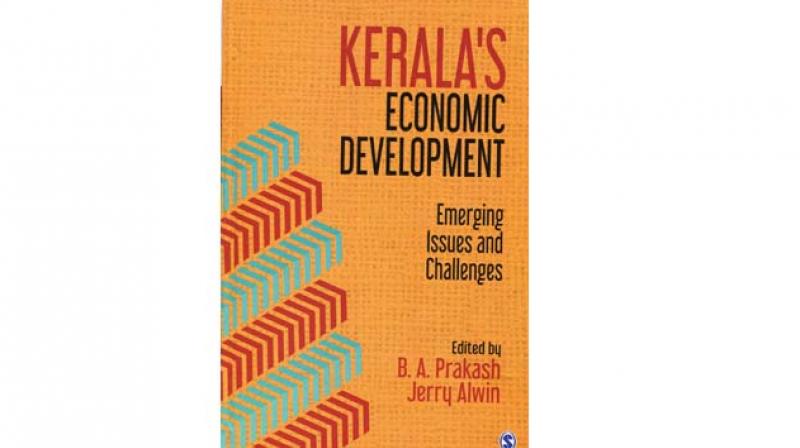State economy; no easy answers

Kerala’s socio-economic development, perhaps, is one of the over researched and often searched topic in the contemporary history of social science studies. The curious case of State’s development trajectory often styled as the ‘Kerala Model’ with its attendant attributes of low per-capita income or income per individuals and high achievements in social development gauges such as high literacy rates, infant survival rates etc was and is an evergreen topic for research. Both scholastic minds and eminent hands have subjected the subject to rigorous scrutiny – theoretically and empirically – time and again. Therefore, any addition to the existing body of literature risk elevated expectations from readers of all genres and are bound to face constructive criticism from concerned scholars.
Hence, the book titled ‘Kerala’s Economic Development: Emerging Issues and Challenges’ – a compendium of articles authored by an assortment of academics – has raised considerable expectations among academic fraternity and discerning readers. A work by a group of specialist scholars the book covers diverse subjects ranging from macroeconomics to public finance and agrarian economy to information technology, industry and infrastructure.
The editors Prof BA Prakash and Dr Jerry Alwin give a snapshot of the book in the opening chapter which promises to provide an in-depth analysis of the major development issues and challenges before Kerala. By saying “This book examines the state’s economic growth as well as the issues that have accompanied the policy changes”, the authors put the book on high optics.
The argument of the book is to corroborate a paradigm propounded by a particular school of thought that argues the case of invincibility of the invisible hands of free market in ensuring efficiency in distribution and allocation of resources. Extending this logic to Kerala, the authors say: “Kerala’s development experience has attracted worldwide attention due to (its) paradoxical development attaining higher quality of life of people on the one hand and continuation of the backward productive sectors on the other” ((sic). “The State’s economy”, they say “remains backward in many respects and relied heavily on remittance(s) of Kerala emigrants”.
While this part of the statement of the objectives supposedly supported by subsequent papers throws up no surprises and may be considered as a safe harbour with no material consequences, what follows, however, merits attention. “The implementation of liberalisation and globalisation policies since 1991 radically altered the growth process and Kerala achieved higher rates of investment and growth and greater technological change. These policies, however, have not only provided enormous opportunities, but also new challenges”, the editors say to drive home their point.
But what follows in the book essayed under soporific topics leave discerning readers ruing, if not fretting. After going through the articles several times over, it is hard to find any empirical evidence that support the thesis of an elevated economic growth post liberalisation and globalisation. The authors have failed to supply any hard facts to prove that State has managed to break away from its path dependency on government spending and remittances and the reforms have put Kerala economy on a virtues cycle of elevated growth, income, savings, investments and employment.
Further, the glaring disconnect between the hypothesis that globalisation with economic reforms in toe were (are) instrumental in eliminating the structural rigidities weighing on growth and development and the numbers that were boxed into tables is the major downside of the entire narrative. Many of the arguments that authors raise in their papers sadly seem to be in disagreement with the data they supply to substantiate their seemingly unconvincing arguments.
Particularly, the paper by Prof KJ Joseph and Brijit Joseph “Lagging Sector in a Leading Economy: Case of Plantation Agriculture in Kerala” raises a sense of déjà vu and presents a counter narrative to the running theme of the book. After going through the nuances of development of plantation sector, the authors come to the laboured conclusion that the economic reforms rolled out since 1991 remain as a glass half filled and leave much to be desired for millions those who are employed in this space.
From the authors’ point of view, the book might have served their purpose best. But for the class of discerning readers it is an avoidable reading. The advices of authors may be in sync with the taste of readers for whom facts may not matter any longer.
Kerala’s Economic Development: Emerging Issues and Challenges
Edited by BA Prakash, Jerry Alwin Rs 1,095 pp 411, Sage Publication India (Pvt) Ltd, (2018)

